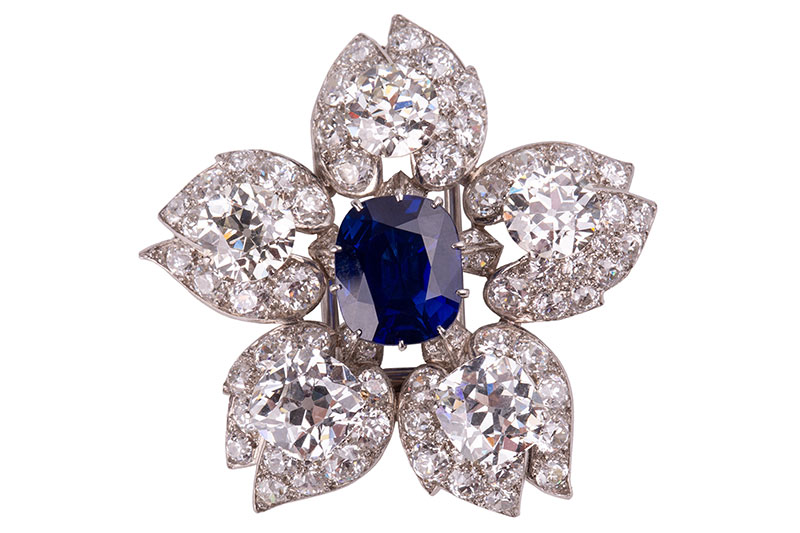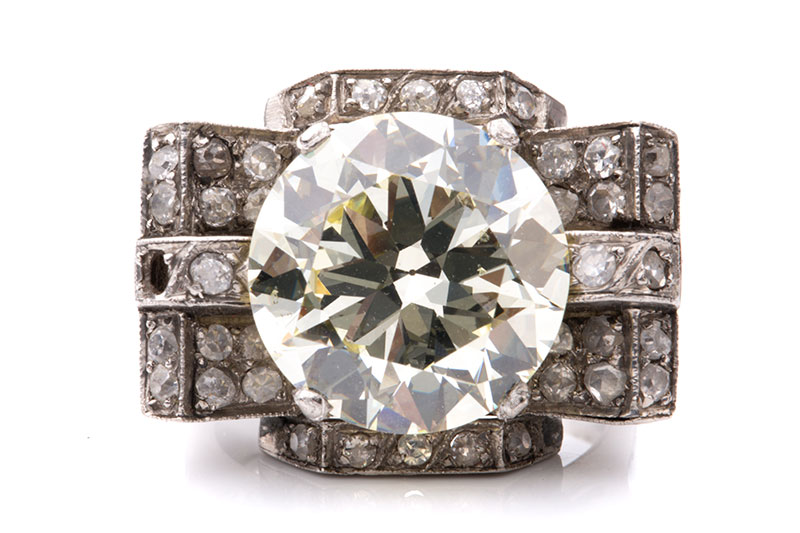How can you tell if Jewellery is Fine?
We look at how you can differentiate a piece of jewellery as fine and investment worthy
05/04/2024
As the prices of jewellery continue to increase, we look at how you can differentiate a piece of jewellery as fine and investment worthy.
When it comes to classification, the metal used to create the jewellery is the most obvious characteristic. Fine jewellery is made from gold, silver, or platinum, if the piece was made within the last century, it should have some hallmarks, stamps or marks indicating purity, age, origin and or maker. The metal should be consistent in colour and appearance, the only fine metal that changes colour with wear, is white gold which requires regular rhodium plating to maintain its shining appearance. During the World Wars, silver and platinum were bonded onto yellow gold to reduce costs, this will have a significantly different appearance to a base metal reproduction piece. On closer inspection, fine jewellery surfaces should be smooth and even with meticulously moulded or engraved decoration, any unsanded edges can indicate less than desired quality. Fine pieces will have a healthy weight consistent with their design and size.
A spectacular Cartier Kashmir sapphire and diamond flower brooch
Another important characteristic of fine jewellery is the presence of natural gemstones or diamonds. Using a jeweller’s loupe or magnifying glass, each stone should be examined carefully for signs of inclusions, or lack thereof, damage, as well the intensity and saturation of colours. Poorly polished stones can indicate fakes or synthetics, while scratched and chipped stones can suggest imitations. Claws or prongs should be placed with care and consideration, securing the stone while allowing its beauty to shine through. Any evidence of glue in the settings is a tell-tale sign of less than fine quality.
An Art Deco style diamond cocktail ring
Occasionally a piece of fine jewellery will be accompanied by a certificate of authenticity or a grading report. These should be carefully scrutinised against the piece to ensure that they are not only genuine, but that the details contained in these documents match the item in question, i.e.: If a grading report lists a diamond as being round but the stone is obviously rectangular, then something is amiss. On rare occasions, certificates of authenticity contain serial numbers which should match the serial number on the jewel.

An impressive antique collet-set diamond lavliere necklace
Sold for £23,000
There are several home testing kits available to check metal purity, diamonds, and gemstones. While these methods can be helpful in identifying characteristics, they are not without their risks. Acid tests for metal contain potent and toxic chemicals that can damage jewellery and cause skin burns. It is also worth noting that the average diamond tester doesn’t have the ability to check if a stone is natural diamond, moissanite or lab created. Advances in technology have brought to market a handful of reliable new testing kits, but these come at cost starting at approximately £2,000.
We would always advise consulting with a jewellery expert, should you be looking to have any fine jewellery accurately assessed and valued.
Related Articles
How do I know if my Jewellery is valuable?
Are Jewellery Valuations Free?
How Do I Sell Unwanted Jewellery?
Do you have any fine jewellery that you are thinking of selling?
With a global audience of over 10 million, Dawsons can achieve the best price at auction.
Get in touch with an expert jewellery valuer for confidential sales advice, we would be delighted to help:

